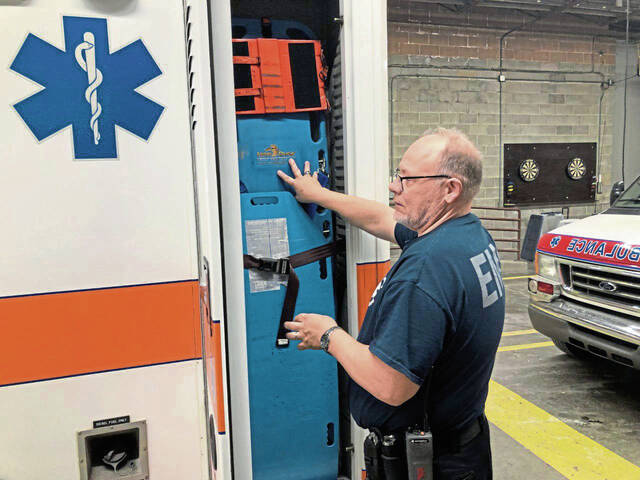Editorial: Funding emergency equipment is vital responsibility
The siren of an ambulance, a fire truck or police car can herald a pricey proposition.
For most people, that would seem to be about the hospital bill or the insurance deductible or that speeding ticket.
But first responders know just how much it costs to keep the specialized equipment rolling.
Jeannette EMS will be buying two new ambulances, while the Sutersville Volunteer Fire Department is picking up a new firetruck, all with the help of grants and loans through the U.S. Department of Agriculture. Tarentum also will be getting a new police car.
The police car is the smallest and the most affordable of the purchases. Tarentum’s grant was for $33,700, and the municipality also will benefit from obtaining the vehicle through the state’s cooperative purchasing agreement. The average price of a new police vehicle in the U.S. is about $50,000, and because of how many miles they log, they have to be replaced regularly. They also are operated by government units that have their built-in tax-dollar funding stream.
Ambulance services and fire departments are not always so lucky. In Pennsylvania, many are affiliated with municipalities but still separate. Most fire departments in the state run on donations, fundraisers and volunteer hours.
That is why the mix of funding is both a saving grace and a shackle.
The average cost of an ambulance is about $150,000 but easily can be higher, and that is before adding in all the expensive but necessary machinery that helps get a sick or injured patient to the hospital safely.
The same goes for fire equipment. A simple, starter firetruck can be more than $200,000. A tanker or ladder truck can double or triple that cost. Highly specialized vehicles can go into the millions. Again, that’s without the respirators and protective gear to save the firefighters trying to save others.
Jeannette is replacing two 2006 ambulances with its funding package of a $100,000 grant and a $128,500 loan. Sutersville will be using a $400,000 Federal Emergency Management Agency grant, plus the USDA’s $100,000 grant and an $87,000 low-interest loan to buy a new hose truck. The old one likely will be scrapped.
That means the EMS service and the volunteer firefighters will still be on the hook for paying back the loan part.
Let’s be clear: The funding packages are something that makes it possible for small or financially strapped communities or emergency response organizations to purchase vital equipment, and that is a good, necessary thing.
But it is only half of what makes similar programs that fund water line or sewer treatment installations or other necessary projects work.
The other half is consistent funding. Ambulance services may seem like the bad guy when you get a $1,000 bill, but they frequently operate on scalpel-thin margins and with drastically stretched staff. And the fact that volunteer firefighters have to beg for money to save lives is tragic.
There must be a better way to fund these vital services. Until there is, everyone needs to step up to support them when possible through ambulance memberships, donations or even just buying a hoagie from a fundraiser if that’s what will keep the ambulances and fire trucks rolling.
Remove the ads from your TribLIVE reading experience but still support the journalists who create the content with TribLIVE Ad-Free.

